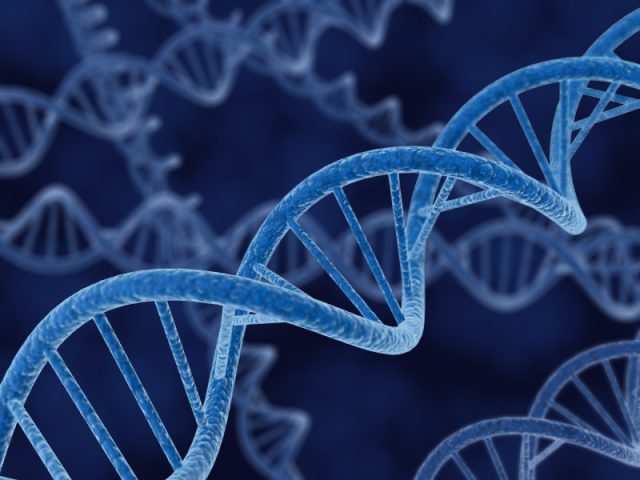
One thing cells must do in order to become cancerous is to overthrow the normal checks on their growth. As a part of this process, the stringent controls on things like copying and repairing DNA start to break down. As a result, tumors often contain chromosomal rearrangements, which are places where genes are cut and pasted back together in ways that they shouldn’t be.
In some cases, the breaks bring two genes together in a way that causes what are called “driver mutations,” forming a fusion protein that pushes the cells further along the road to malignancy. For some types of cancer, nearly every tumor contains one of these chromosome breaks, making its fusion genes a hallmark of that cancer. A group of researchers at the University of Pittsburgh School of Medicine just took advantage of this specificity by targeting the fusion genes to attack cancer cells and take them down.
The work relies on the CRISPR-Cas system, which is used by bacteria to recognize foreign DNA (like that of a virus) and chop it up. We’ve since learned how to target any DNA sequence, making it a formidable means of gene editing. Here, the researchers used a CRISPR-Cas system to make a nick—a single stranded cut in the double helix—in the tumor DNA, right at the point where two genes are fused.
This break should trigger the cell’s repair pathway to fix that single stranded nick, so the researchers hijacked this system by providing it with DNA to use in the repair. With the DNA supplied by the researchers, the repair system inserted an enzyme into the location of the gene fusion. The enzyme they chose takes a harmless drug precursor and metabolizes it into its active form. So: they target the tumor cell because only it has this DNA rearrangement; then, when they apply the drug, only tumor cells are affected by it. Normal cells aren’t.
First, the researchers tested the approach by generating cells with the gene rearrangement they wanted; they took a fusion gene that recurs in prostate cancer and put it into a cell line that usually lacks it. Their approach worked: only cells that received all of the components (fusion gene, CRISPR-Cas, new enzyme, and drug) were killed. Cells without the fusion gene could not express the enzyme and thus were unaffected by the drug.
Let’s test on mice
Next the researchers took the engineered cells and transplanted them into immunodeficient mice, where the cells grew into tumors. (This is a pretty standard way of generating tumors on which drugs can be tested.) If the mice were given all of the components of the CRISPR/drug system, the tumors shrank by 30 percent. Control mice, whose tumors did not have the fusion gene, exhibited a metastasis rate of 50 percent—even if they were given the CRISPR/drug components—and died.
Then the researchers tried it in a human hepatocellular carcinoma cell line that had a different chromosomal rearrangement. This means they had to modify the CRISPR-Cas system to target this rearrangement. But they saw the same effect: up to 27 percent of the cells expressed the enzyme (this rate is typical for gene editing using CRISPR-Cas), and up to 27 percent of cells were killed by the drug.
Lastly, they put these cells in mice, and saw the same thing: mice that also got all of the other components had their tumors shrink, but mice that didn’t died.
Current cancer therapeutics often rely on interrupting the signaling pathways that drive tumor growth and are thus almost begging the tumor to develop resistance. Since fusion-gene breakpoints may not be cancer drivers, using them to target tumor cells might not induce resistance in the same way. And even if using breakpoints does, some other bit of DNA damage in the tumors can just be targeted, as long as one can be identified. Since the DNA damage is so highly specific, targeting it with drugs doesn’t generate the nasty side effects that result when drugs run afoul of normal cells instead of just cancer cells.
Since chromosomal breakpoints may differ among people—and even among different tumors in the same person—this would be a highly individualized therapy. But if it is technically feasible, it might hold promise.
[“Source-arstechnica”]









